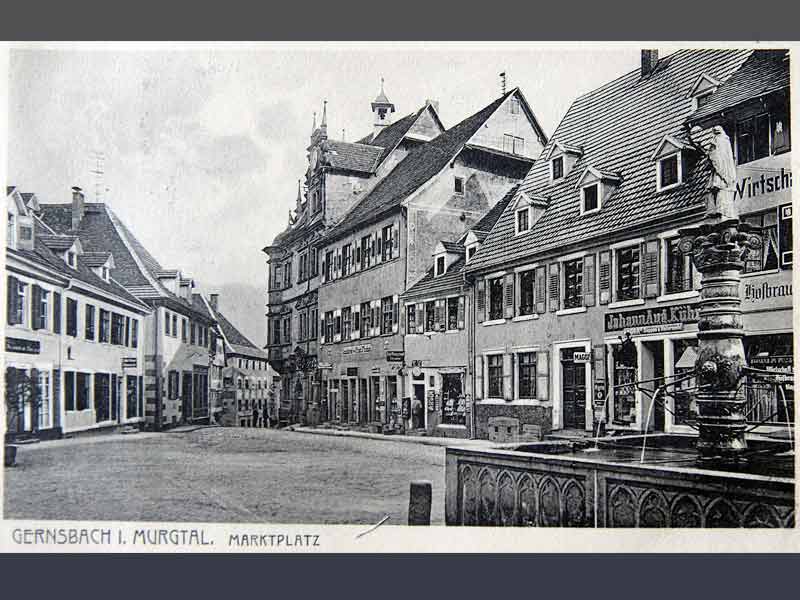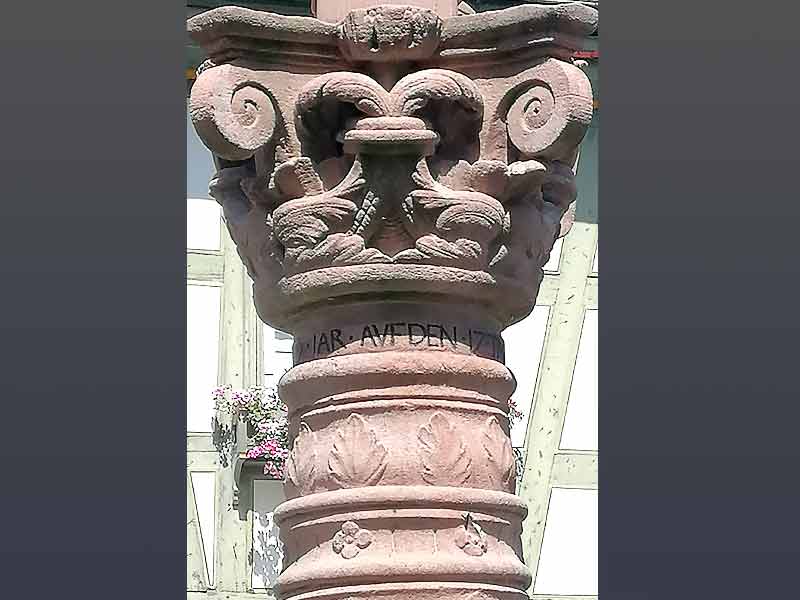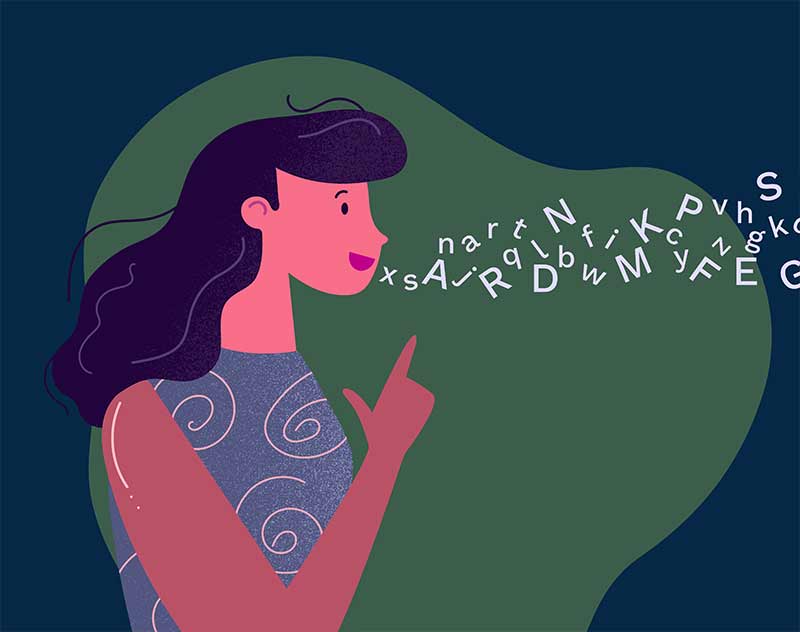Marktplatz mit Brunnen
In Gernsbach bestand bereits zur Zeit seiner ersten Erwähnung im Jahr 1219 ein Markt. Dieser hatte über das Murgtal hinaus lange Zeit regionale Bedeutung. Er fand jeden Montag auf der Hauptstraße statt, nicht nur im Bereich des heutigen Marktplatzes, sondern insbesondere auch oberhalb davon, so vor allem vor und in dem städtischen Kaufhaus, für das sich ab dem 17. Jahrhundert die Bezeichnung „Kornhaus“ einbürgerte.
Ein Marktbrunnen wird erstmals 1503 erwähnt. Er oder zumindest der Brunnenstock wurde ausweislich der Inschrift 1549 neu errichtet. Während die Einfassung aus Sandstein spätgotisch ist, gehört die profilierte Säule, die mit vier Ebersteiner Rosen und zwei stehenden Blattfriesen verziert ist, stilistisch in die Zeit der Renaissance. Am Kapitell sind je zwei zusammenstoßende spitze Fischgesichter und geschuppte Fischleiber zu sehen, teilweise verdeckt von doppelten lappigen Blättern.
Auf der Deckplatte erhebt sich seit 1750 die Sandsteinfigur des Heiligen Franz Xaver, des Mitbegründers des Jesuitenordens. Die jetzige Figur ist seit der Restaurierung des Brunnens 2015/16 eine Kopie, das Original wird derzeit in einem Schaufenster in der Hauptstraße 28/30 aufbewahrt. Die Aufstellung der Heiligenstatue wurde von dem speyrischen Amtsschreiber Franz Andreas Ettlinger veranlasst und ist in Zusammenhang mit den religiösen Konflikten zu sehen, die vor allem in der ersten Hälfte des 18. Jahrhunderts zwischen der mehrheitlich evangelischen Stadtbevölkerung und den beiden katholischen Stadtherren – den Markgrafen von Baden und den Bischöfen von Speyer – bestanden.
Die lange Zeit gepflegte Legende, dass es sich bei den vier Brunnenröhren um die Gewehrläufe von Freischärlern der Revolution von 1849 handele, ist inzwischen eindeutig widerlegt.
 Mobile
Mobile









